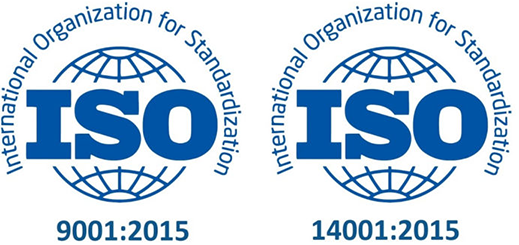En un mundo donde la conciencia sobre el impacto ambiental y social de las empresas es cada vez más relevante, la memoria de sostenibilidad se ha convertido en una herramienta esencial para medir y comunicar los esfuerzos de una organización en términos de sostenibilidad.
La memoria de sostenibilidad, también conocida como informe de sostenibilidad o reporte de responsabilidad corporativa, es un documento que detalla las acciones y resultados relacionados con la sostenibilidad, abordando aspectos como el medio ambiente, la sociedad y la gobernanza.
¿Qué es la Memoria de Sostenibilidad?
La memoria de sostenibilidad es un informe profundo que proporciona una visión clara y transparente del desempeño de una empresa en materia de sostenibilidad.
Su objetivo es
- Evaluar el impacto ambiental, social y económico de la organización
- Comunicar sus prácticas sostenibles
- Resaltar los esfuerzos para abordar los desafíos a los que se enfrenta en su compromiso con el desarrollo sostenible.
Dicho esto, este informe va más allá de los datos financieros tradicionales y se centra en aspectos clave como la gestión responsable de los recursos naturales, la promoción del bienestar social de los empleados y las comunidades, la transparencia en las prácticas comerciales y el respeto por los derechos humanos.
También identifica y analiza los riesgos y oportunidades relacionados con la sostenibilidad, lo que permite a la empresa tomar decisiones informadas y estratégicas hacia un futuro más sostenible.
El Propósito de la Memoria de Sostenibilidad
Esta memoria tiene un propósito clave: ofrecer transparencia y rendición de cuentas a las partes interesadas.
Estas partes pueden incluir a los empleados, clientes, inversores, proveedores, comunidades locales y la sociedad en general.
Al proporcionar una visión completa y objetiva de los impactos ambientales, sociales y económicos de una empresa, la memoria de sostenibilidad permite evaluar su desempeño en áreas clave y tomar decisiones.
Contenido de la Memoria de Sostenibilidad
El contenido de la memoria de sostenibilidad puede variar según la empresa y su sector, pero generalmente incluye los siguientes elementos:
- Compromiso con la sostenibilidad: Introducción que destaca la importancia de la sostenibilidad en la cultura corporativa y los valores de la empresa.
- Contexto y alcance: Descripción del contexto en el que opera la empresa y el alcance del informe (áreas y períodos cubiertos).
- Materialidad: Identificación y análisis de los temas más relevantes para la empresa y sus grupos de interés.
- Objetivos y metas: Establecimiento de objetivos claros y medibles para mejorar el ejercicio en aspectos sostenibles.
- Políticas y prácticas: Detalles sobre las políticas y prácticas adoptadas para abordar los desafíos de sostenibilidad y cumplir con los objetivos.
- Indicadores de desempeño clave: Métricas cuantitativas que evalúan el progreso hacia los objetivos de sostenibilidad.
- Iniciativas y proyectos: Información sobre proyectos específicos implementados para abordar problemas de sostenibilidad y sus resultados.
- Participación de grupos de interés: Descripción de cómo la empresa interactúa y se involucra con sus grupos de interés en temas de sostenibilidad.
- Evaluación de riesgos y oportunidades: Identificación de los riesgos y oportunidades clave relacionados con la sostenibilidad que afectan a la empresa.
- Cumplimiento de regulaciones: Información sobre el cumplimiento de las leyes y regulaciones relacionadas con la sostenibilidad.
- Futuro y visión: Perspectivas y objetivos futuros relacionados con la sostenibilidad y el desarrollo sostenible.
Beneficios de la Memoria
Los beneficios que aporta la memoria de sostenibilidad son:
- Transparencia y Credibilidad: proporciona un nivel de transparencia que inspira confianza en los grupos de interés, como clientes, inversores y consumidores. Al mostrar abiertamente los esfuerzos y resultados en materia de sostenibilidad, la empresa demuestra su compromiso real con la responsabilidad corporativa.
- Mejora del Desempeño: Al analizar y comunicar los datos e indicadores claves relacionados con la sostenibilidad, las organizaciones pueden identificar áreas de mejora y establecer objetivos medibles para impulsar su desempeño sostenible. Esto impulsa un ciclo de mejora continua y fomenta una cultura empresarial enfocada en la sostenibilidad.
- Atracción de Inversores y Talento: Los inversores y empleados, especialmente las nuevas generaciones, valoran cada vez más las empresas que operan de manera sostenible. La memoria de sostenibilidad sirve como un medio para atraer inversores responsables y atraer y retener a empleados comprometidos con los valores y la misión de la empresa.
- Cumplimiento y Adaptación: permite a las empresas sostenibles evaluar su cumplimiento con normas y regulaciones ambientales y sociales, así como anticipar y adaptarse proactivamente a las futuras demandas y expectativas del mercado en términos de sostenibilidad.
- Posicionamiento Competitivo: La sostenibilidad puede convertirse en una ventaja competitiva clave para una empresa. Aquellas organizaciones que comunican eficazmente sus esfuerzos sostenibles pueden diferenciarse en el mercado y ser percibidas como líderes en la industria.
- Contribución al Desarrollo Sostenible: Al informar sobre sus prácticas sostenibles, las empresas pueden inspirar y motivar a otras organizaciones y partes interesadas a adoptar enfoques similares y colaborar en el camino hacia un futuro más sostenible para todos.





